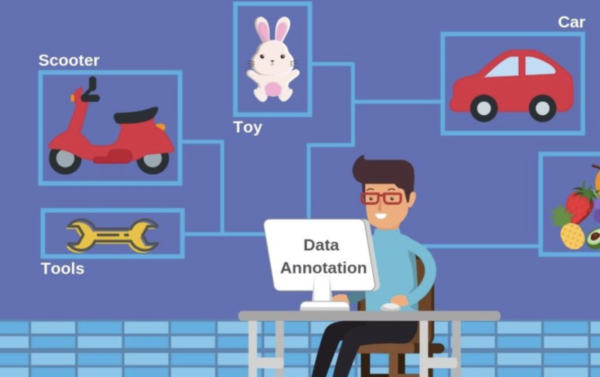Modern technologies, such as artificial intelligence (AI), machine learning (ML), and various applications, need large datasets to work, learn, and perform effective tasks. Precisely, computer vision tech depends on analyzing images, understanding them like humans, and producing results. Hence, image data labeling and annotation have become critical in supervised ML tasks.
ML models can be trained to operate and produce results with image annotation quickly. The idea is to improve the image recognition process, saving us time and effort.
What Is Image Annotation?
The proliferation of advanced AI and ML technologies has made the ground fertile for improving how computers read images. Image annotation refers to describing an image in detail. It includes adding metadata to help the computer process the image. The more precise the descriptions, the better its further applications.
Now, the challenge lies in annotating every image or visual in an extensive library. Manual efforts are often time-consuming and hectic for the employees as image size and data can be overwhelming.
We can use any open-source data annotation tool, such as Computer Vision Annotation Tool (CVAT), or try dedicated and professional image annotation services. The ability to organize, manage, annotate, and update large datasets will be beneficial in establishing quality data analysis services.
Also, if there are other types of data, such as text, audio, or video, availing of data annotation services can help us better train our AI and ML models.
Types of Image Annotation
Bounding Boxes
- The most common technique during computer vision
- Rectangular boxes are used for defining the object’s location
- We determine the location using the x and y coordinates in the top-left and lower-right corners
- Two types of determinants of bounding boxes: (x1, y1) and (x2, y2) or (x1, y1) and width (w) and height (h)
- Ideal for object detection & localization tasks
3D Cuboids
- It is like the bounding box annotation but improvises with a 3D representation of the object
- Effective in analyzing the volume and features in a 3D environment
- These 3D cuboids can find applications in the automobile driving industry
Lines and Splines
- As the name suggests, it uses lines and splines to annotate images
- It helps develop lane detection and recognition capabilities for autonomous vehicles
- The image annotation type is witnessing growth in its application
Semantic Segmentation
- This annotation type gives semantic meaning to every pixel in the image. It is also called a pixel-wise annotation
- It assigns every image pixel to a class, such as a car, bus, footpath, road, tree, and more.
- It is crucial in training ML models operating in a specified environment
- Autonomous vehicles and robotics are significant suitors
Polygonal Segmentation
- It is useful for objects which are not rectangular
- It uses complex polygons to identify the thing and localize it
- Complex polygons help in precise detection and localization
Key-point and Landmark
- It creates dots across the image
- It helps detect small objects and variations, such as facial, expressions, human poses, facial features, and so on
How Is Image Annotation Different from Image Labeling?
Image labeling and annotation may sound similar, but they differ significantly in their approach and use cases. Let’s compare the two:
Image Annotation
- It is more complicated than labeling and categorizing images
- To be effective, you must work on it at a larger scale
- You can apply it to specific ML objectives, audiences, or algorithms
- Considerably more time- and skill-intensive than labeling images
- Making AI systems function successfully is a significantly more challenging process requiring many classed or annotated images to work with
- It requires greater intelligence as well as a vast vocabulary
- It complements digital images with captions and metadata
Labeling Images
- Compared to image annotation, it is simpler to carry out
- Compared to image annotation, it works effectively at lower scales
- It is a widely used procedure for generic purposes
- Since it is simple, it can be completed quickly and with little knowledge
- Its goal is to organize and categorize photos by mapping out their locations and assigning them labels so that you can control robots and other systems
- It can be carried out without higher intelligence using common, simple words
- By identifying the things visible in the images, it labels or categorizes them
Different Image Annotation Formats
Here are a few most prominent annotation formats in use:
YOLO
- It creates a .txt file in the directory. The file name is the same as the image file
- Object annotation consists of: object class, coordinates, height, and width
- Format: <object-class> <x> <y> <width> <height>
- Example: 1 83 42 80 80
COCO Annotation Format
- It comprises of five annotation types
- It stores annotation using JSON
- COCO can annotate “object detection,” “keypoint detection,” “panoptic segmentation,” “stuff segmentation,” and “image captioning.”
Pascal VOC
- It stores annotation in an XML File
The Conclusion
Image data labeling and annotation is an effective mechanism to generate value from your datasets and train ML models to perform tasks effectively. The article covers the various techniques of image annotation and labeling and how to use them to have a practical impact.

